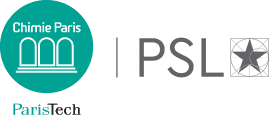Functional groups: synthesis and reactivity
MH12ES.SR
Written exam
The course CMB.SR.1.2 is in continuity with CMB.SR.1.1 and addresses the reactivity of carbonyl functions (aldehydes and ketones) and that of carboxylic acids and their derivatives (additions, oxidation, reduction, enolization, etc.). Particular emphasis is placed on the study of mechanisms by trying to show similarities between seemingly unrelated reactions.
Course program:
1) Organometallic derivatives: preparation, properties
2) Carbonyl derivatives:
Nomenclature and physico-chemical properties, preparation
Addition reactions (water, alcohols, amines, thiols, etc.)
Ylide addition reactions (Wittig, …)
Reduction to alcohol and alkanes
Formation and reactivity of enols, enolates, enamines, silylated enol ethers
Aldolization, alkylation, halogenation
Michael’s Additions, Robinson’s Annellation
Oxidation and reduction reactions
3) Carboxylic acids and derivatives:
Nomenclature and physico-chemical properties, preparation of acids and derivatives
Curtius, Arndt Eistert, Knoevenagel, Darzens reactions
Wolff’s rearrangement,
Claisen and Dieckman condensation
Reduction reactions
By the end of the EU CMB.SR.1.2, students will have acquired the basics of organic chemistry as a tool for the development of synthesis processes. They will be in possession of the knowledge necessary to understand and analyze the mechanisms of the main reactions that lead to organic compounds. They will be able to apply these concepts to the resolution of simple synthesis and retrosynthesis problems.
Teaching language: FR
Documents:
handouts
